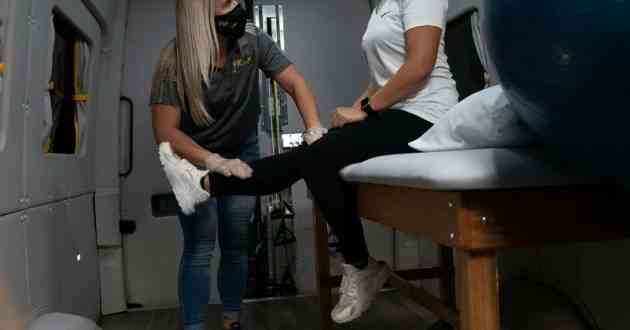Facts And Myth About Physical Therapy

Physical therapists improve mobility and function by providing hands-on treatment to patients with injuries or diseases.
Physical therapy is a scientific and evidence-based treatment that helps patients regain and improve movement and mobility, reduce pain, increase their function and control, restore lost function through nerve recovery, and research. Physical therapists are one of the best professionals recommended by doctors and hospitals to treat various kinds of ailments.
Physical therapy (PT) is an allied health profession. Physical therapists improve mobility and function by providing hands-on treatment to patients with injuries or diseases. It also increases the body's ability to heal after accidents, surgeries, or medical procedures. Physical therapy is an active process that requires movement. The goal is to enhance a person's quality of life through physical activity and the promotion of wellness.
There are lots of myths and facts about physical therapy. Whether you’re a patient, a student, or a physical therapist yourself,
Below, we provide you with the major myth and facts about physical therapy:
Myth: Physical therapy is only for muscle problems.
Fact : Physical therapy is a diverse health care practice that helps prevent injury and pain, and promotes mobility, health, and wellness. From sports injuries to post-fracture rehab to joint pains, to back pain, to cardiac rehabilitation, stroke management. Physical therapist can help in many situations.
Myth: Physical therapy helps only post-injury
A common misconception in the general public is that it helps only post-injury. However, Physical therapy can help prevent injuries from happening in the first place. It is used to help individuals overcome pain and restore mobility. It also can help you achieve a number of benefits. These include reducing pain and discomfort, treating sports injuries, rehabilitating muscle contractures and strains and much more. However in most cases, injuries are prevention-oriented especially in the case of sportsmen.
Myth: Physical therapy sessions are of long duration always.
Physical therapy sessions are not of the same duration. The factor which decides the duration of physical therapy session is the injury you have suffered and which part of your body has been injured. For example, a fracture takes 6-8 weeks to heal and hence, you cannot start physical therapy for such an injury, during that time period.
Myth: I can do physical therapy myself.
Your participation is key to a successful treatment plan, but every patient still needs the expert care and guidance of a licensed physical therapist. Your therapist will leverage his or her specialized education, clinical expertise, and the latest available evidence to evaluate your needs and make a diagnosis before creating an individualized plan of care.
Myth: Physical therapy is painful.
There is a common myth about physical therapy which is that physical therapy is painful. While it may not be painless, a lot of ways exist whereby you can have a positive experience with physical therapy. There are certain exercises and routines that may seem painful and uncomfortable. However, their effect on the muscles or your condition can help cure the problem altogether. By exercising the bones and muscles in a particular manner that promotes healing and greater function, you can walk away from your condition feeling much better than before. Physiotherapists seek to minimize pain/discomfort — even if it is chronic or long-term. They work within the range of your pain threshold to help you heal and restore movement.
Myth: I need a referral to see a physical therapist.
The myth that a doctor's referral is required to see a physical therapist is just that a myth. This is simply not true. In some states there may be restrictions about how and when treatment can be given without a referral from your physician but in most cases this does not apply.
Myth: physical therapy is a massage therapy
A lot of people have the misconception that physical therapy is a type of massage therapy. Physical therapy is a therapeutic intervention for restoring mobility and normal functioning to an impaired body part or tissue due to illness, disease or injury. There are many different methods of physical therapy that determine a therapist's treatment plan. A variety of massage therapies are available which aim to achieve relaxation and well-being as well as improve physical health.



